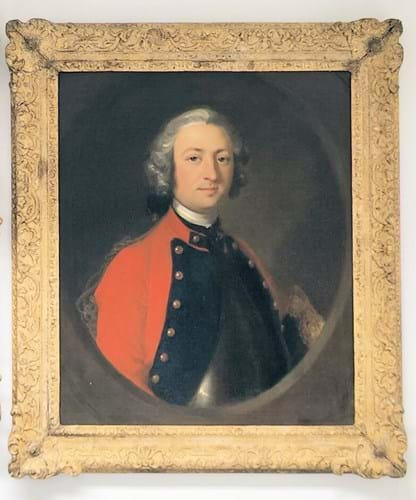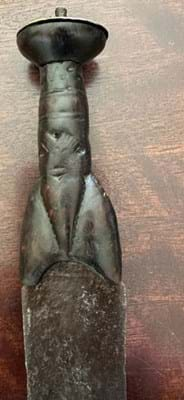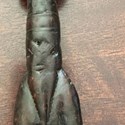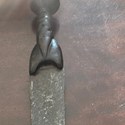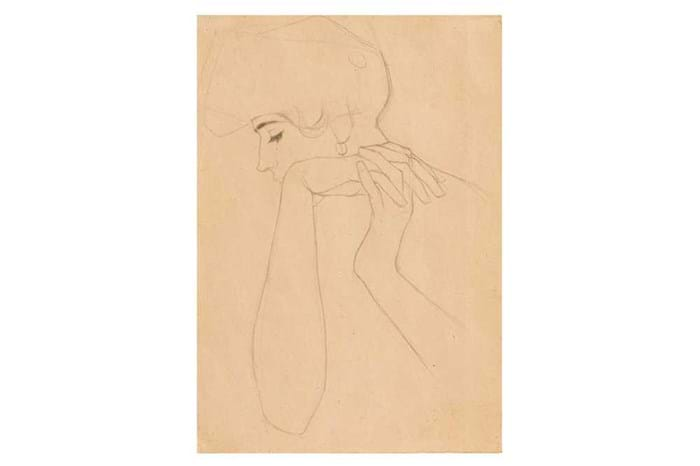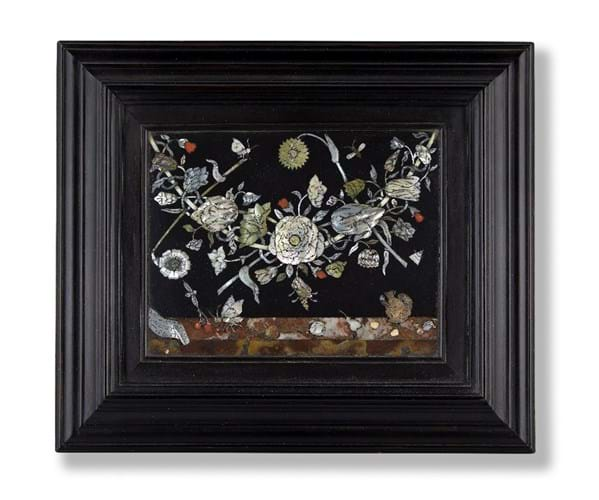
Dutch Baroque engraved mother-of-pearl, bone and hardstone inlaid slate panel by Dirck Van Rijswijck, £40,000 at Bonhams.
1. Dutch Baroque panel – £40,000
Although originally training as a goldsmith, Dirck Van Rijswijck (1596-1679) developed his own characteristic style using less rarefied material. While working in Antwerp he perfected an idiosyncratic technique using engraved mother-of-pearl, bone and hardstone inlays to create floral still life subjects.
The natural variations in the shell and stone were used to suggest the colours and surface textures of the various flowers.
These Baroque curiosities are rare at auction, but a fine example was offered by Bonhams as part of November 21 sale of the single-owner collection of Cornelis Paulus van Pauwvliet. He collected for close to 50 years, furnishing an Amsterdam home just a stone's throw from the Rijksmuseum, with English and Dutch works of art from the 17th century to the late 19th century.
Van Pauwvliet had bought this 6 x 4.5in (15 x 12cm) panel from London dealership Jeremy in the 1990s (it had previously sold at Sotheby’s in Monaco). Depicting a floral garland with a butterfly and a variegated stone tabletop with dragonfly and squirrel, it is signed and dated to the left-hand corner within a paper scroll, Dirck Van Riswick, Invenit e Fecit, AD 1665.
One of many well-received items in the £2.86m Pauwvliet sale, it was estimated at £12,000-18,000 and sold at £40,000. As the item was brought into the UK from Holland for sale, import VAT of 5% was due on the hammer price.
2. A view of Hawaii – £1750
Although this small oil sketch, that surfaced at Oxio Paris in Saint-Ouen on November 19 was catalogued as by Howard Hancock, the signature is clearly that of David Howard Hitchcock (1861-1943).
He was born and spent most of his life in Hawaii, becoming a key member of the so-called Volcano School – the group of non-native Hawaiian artists who painted dramatic nocturnal scenes of Hawaii's erupting volcanoes.
This 8 x 10in (19 x 25cm) work, depicting two figures enjoying the waters of a tropical riverbank, probably dates from the 1920s when Hitchcock’s style had become more impressionistic. At the time he was exhibiting regularly at a series of commercial galleries in Los Angeles and San Francisco in particular. His work can bring substantial sums so this one, miscatalogued and estimated at just €100-150, was doubtless something of a bargain at €2000 (£1750).
3. Delilah project papers
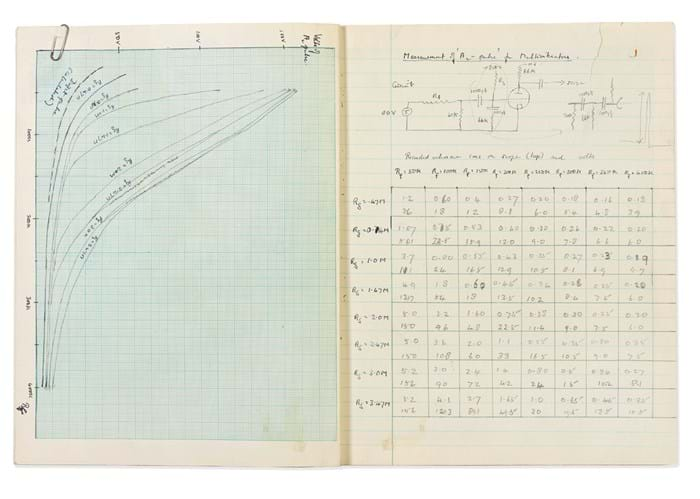
A cache of papers relating to the Delilah project, led by Alan Turing and Donald Bayley, sold for £300,000 at Bonhams.
Newly-discovered papers relating to the Delilah project, a wartime collaboration led by Alan Turing (1912-54) to develop a speech encryption system, came for sale at Bonhams in London on November 14.
The £300,000 cache of notebooks and manuscripts were consigned by descent from Donald Bayley (1921-2020), an electrical engineer who worked with the Radio Security Service at Hanslope Park, Buckinghamshire from 1942-75.
The son of a sheet metal worker who won a scholarship to read electrical engineering at Birmingham University, Bayley had graduated with a first-class honours degree in 1942 and was quickly identified as a suitable assistant to Turing.
‘Delilah’ (named by lab-mate Robin Gandy after the infamous deceiver of men) followed Turing’s work on decoding the German Enigma machines and predated the design for an Automatic Computing Engine.
Bayley’s role in the project was to bring his practical experience to bear on Turing's more theoretical approach to electrical circuit design. Turing would demonstrate the portable voice-scrambling system they created by encrypting and decrypting a taped speech by Winston Churchill. However, finished too late to be of use in the war, it was never put into production.
Of the many documents in the lot – including Turing's mathematical proofs and Bayley's transcriptions of Turing's lectures on electrical circuit theory – the Laboratory Notebook was of particular interest. A record of the experiments performed by Turing and recorded in his own hand, it also includes further experiments recorded by Bayley under Turing's direction. Considered ‘the most important and extensive collection of Turing's autograph material to come to auction’ the lot hammered at the lower end of a £300,000-500,000 guide.
4. Richard Wilson portrait – £24,000
Although much better known as a landscape painter working in Rome, Richard Wilson (1713-82) began his career as a portraitist in London.
This portrait of one Major Richard Callis was painted by Wilson in 1741, three years before he moved to Italy where he resolved to start anew in both subject matter and patronage.
Nothing is known of the sitter but he is dressed in the uniform of the First or King's Dragoon Guards, a regiment raised to deal with the insurrection of the Duke of Monmouth in 1685.
The painting has a provenance to Nellie Ionides (1882-1962), the connoisseur collector whose father Sir Marcus Samuel Viscount Bearsted foundered the Shell Transport and Trading Company. It had hung at Ionides’ home, Buxted Park, Sussex, until 2004 when it was acquired by the vendor from a dealer in Bath. Offered by Bristol auction house Auctioneum on November 17 with a modest guide of £2000-4000, it sold at £24,000.
5. Highland dirk – £6800
Decorative Highland dirks from the late 19th century, often mounted in silver and set with cairngorms, appear for sale with some frequency. Much rarer are the close combat weapons from the Tudor and Stuart periods that were far more than mere dress accessories.
The earliest dateable dirk is the dagger clutched by a stone effigy dated to 1502 in Ardchattan Priory. It is noticeably different from earlier medieval knives (the so-called ballock and dudgeon daggers) as the blade is longer, single-edged and tapers to a point. Most dirks had hafts carved from horn or a single piece of rootwood – the style of carving and the form changing over several centuries.
The ‘antique Scottish dirk’ offered for sale by Huntly Auctions in Keith, Moray as part of an online sale that closed on November 19 is of a type typically dated to the late 16th and early 17th century. It measures a total of 21in (52cm) long with its haft carved with a grip and pommel of interwoven bands of knotwork.
A rare survivor in worn but honest condition, it was guided at £800-1200 but made £6800, selling via thesaleroom.com.
6. Egon Schiele’s drawing – £65,000
An original drawing by Austrian Expressionist Egon Schiele appeared at auction for the first time at Chiswick Auctions on November 22. The well-documented 1908 pencil on paper sketch of the artist’s older sister Melanie was expected to sell for £50,000-70,000 and took £65,000 as part of the London firm’s sale titled 20th Century Art: Paintings and Original Works on Paper.
Schiele was a prolific draughtsman. In his most active years, he easily averaged a drawing a day. His early works (Schiele had his first exhibition in the town of Klosterneuburg in 1908) contain strong similarities with those of Klimt as well as influences from Art Nouveau.
The drawing of Melanie Schiele Schuster is well documented and is included in the artist’s catalogue raisonné. Marked with Schiele’s estate stamp on the reverse, it was in the collection of the sitter’s nephew and heir Norbert Gradisch. It appears to have been first exhibited in London in 1975 at Fischer Fine Art, the firm founded by Austria-born dealers Harry and Wolfang Georg Fischer who organised Schiele’s first one-man show in London at Marlborough Fine Art in 1964.



